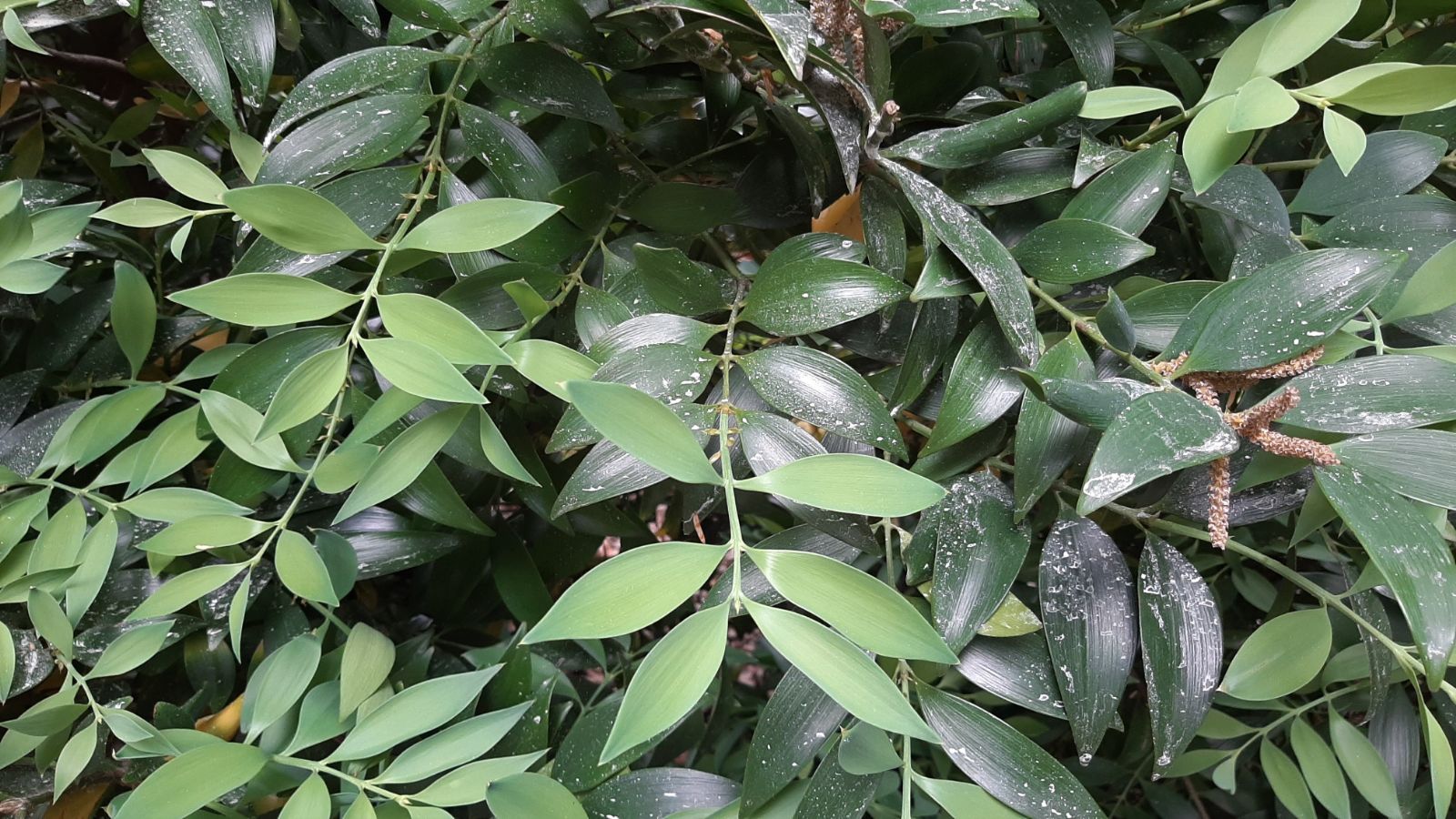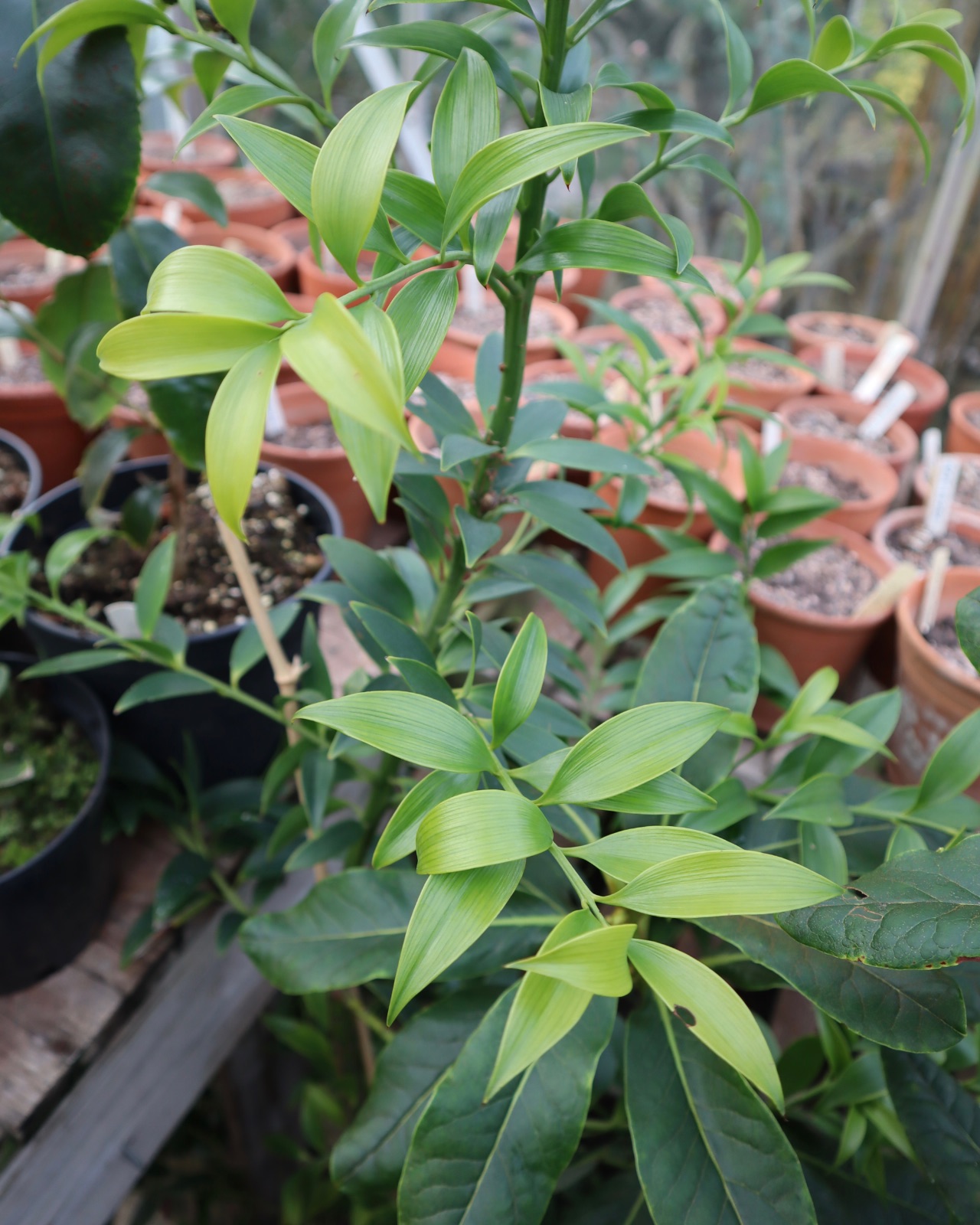Nageia nagi
Credits
New article for Trees and Shrubs Online.
Recommended citation
'Nageia nagi' from the website Trees and Shrubs Online (treesandshrubsonline.
Genus
Synonyms
- Podocarpus nagi (Thunb.) Pilg.
An evergreen tree up to 80 ft high in the wild state, with a trunk 8 ft in girth; bark of large trees smooth and brownish purple, ultimately scaling off in large flakes. Leaves opposite, thick and leathery, varying in shape from roundish ovate to lanceolate, pointed, tapered at the base, 1 to 3 in. long, 1⁄2 to 11⁄4 in. wide, dark green, glabrous and glossy, with numerous veins running lengthwise. Male flowers in axillary, cylindrical, sometimes branched spikes 1⁄2 to 1 in. long, 1⁄6 in. wide. Females solitary or in pairs, developing a globose fruit about 1⁄2 in. wide, covered with plum-like bloom.
Native of Southern Japan, Formosa, and China; introduced by Siebold to Ghent in 1830. Both Sargent and Wilson write enthusiastically of its beauty in Japan; the latter describes it as ‘one of the most strikingly beautiful of all evergreen trees’. It has long been cultivated in the Temperate House at Kew, but is only likely to be hardy out-of-doors in the very mildest parts of our islands. It used to be grown in the open air at Pencarrow in Cornwall. This podocarpus is distinct from all those here mentioned in the wideness of its leaves as compared with their length. The Dutch traveller Kaempfer mistook it for a species of bay-laurel, and called it Laurus juliflora or the catkin-bearing laurel.
'Rotundifolia'
Leaves still more rounded than in the type (gartenfl. (1864), pp. 37 and 562).
'Variegata'
A dwarf garden variety having leaves splashed with white. Introduced by Fortune in 1861 but perhaps no longer in cultivation.


